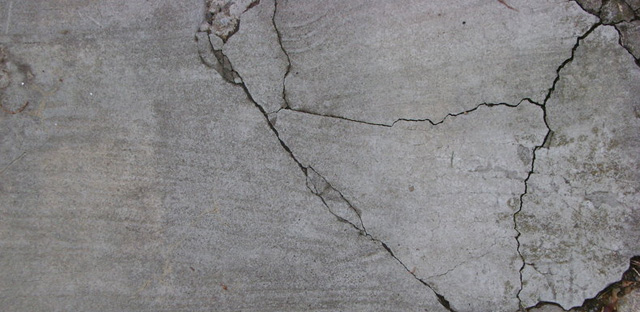Defects to be aware of when purchasing a property
To help develop this article, click 'Edit this article' above.
Contents |
[edit] Introduction
Professional surveyors recommend that it is essential to get an in-depth survey of potential properties before purchasing them, and although it is not always a cheap process, it is certainly worth the money. A surveyor will be able to assess the condition of the property, and identify defects that can be costly to fix.
Below are five of the most expensive property defects that a survey may uncover.
[edit] Foundations
Foundations are an essential part of any structure, but water can get in through cracks and holes in concrete, encourage mould growth, seep through walls and can even weaken and damage foundations. Water damage can be devastating to foundation walls, so it is essential to check the property for any water sources to make sure they are not in danger of harming the foundations.
The ground around the foundation should slope slightly away from the house as this prevents a build-up of rainwater. Gutters and drains should be clear from leaves and other debris.
[edit] Roofing
Damaged roofs can allow water into properties, which can leads to mould growth, mildew and damp. Roofs should be checked thoroughly for signs of cracked or missing slates, as it can be extremely expensive to replace an entire roof.
[edit] Woodworm
Woodworm can cause serious damage to timber-framed properties, and can affect other forms of housing as well. Active between April and September, these beetles eat through exposed wood, leaving small round holes and dust shavings behind them. Infestations can grow if not attended to and in extreme cases it may be necessary to completely fumigate and then replace all affected areas of the property. Smaller infestations can be cleared up using a chemical clearer, although this will still need to be done by a professional.
It is possible to identify woodworm by the small round holes and shavings they leave, or by actually seeing the adult beetles themselves.
[edit] Water and sewerage
Water and sewerage pipes are normally buried several feet underground. If they are exposed to the elements, this is a warning sign in itself. Conducting an annual check is essential to make sure that there are no leaks or cracks.
If there are issues this can become an expensive problem to fix, not just in terms of the pipework itself, but also the clean-up that may be required.
Broken pipes can cause water to back up and seep back into the house, or create puddles that can warp and damage soil, wood and even bricks if left unattended.
[edit] Electrical wiring
Wiring problems can be expensive and unsafe. Many DIY ‘experts’ will have done their own wiring when improving their homes, only really ‘making do’ when it comes to proper cabling. A professional electrician will take great care when installing wiring and should strap cables down neatly so it is possible to clearly identify which wire is which.
Even if you feel as though you have conducted a thorough inspection of a property yourself, it is always recommended that you get a surveyor to check as well. Surveyors are trained professionally in recognising faults and defects and are likely to find things you have missed.
[edit] Find out more
[edit] Related articles on Designing Buildings Wiki
- Certificate of making good defects.
- Condition survey.
- Defective Premises - Liability and Measure of Damages.
- Defective Premises Act.
- Defects in brickwork.
- Defects in dot and dab.
- Defects in stonework.
- Defects liability period.
- Defects.
- Ground heave.
- Latent defects.
- Mould growth.
- Penetrating damp.
- Rising damp.
- Schedule of defects.
- Settlement.
- Wall tie failure.
Featured articles and news
The Building Safety Forum at the Installershow 2025
With speakers confirmed for 24 June as part of Building Safety Week.
The UK’s largest air pollution campaign.
Future Homes Standard, now includes solar, but what else?
Will the new standard, due to in the Autumn, go far enough in terms of performance ?
BSRIA Briefing: Cleaner Air, Better tomorrow
A look back at issues relating to inside and outside air quality, discussed during the BSRIA briefing in 2023.
Restoring Abbotsford's hothouse
Bringing the writer Walter Scott's garden to life.
Reflections on the spending review with CIAT.
Retired firefighter cycles world to raise Grenfell funds
Leaving on 14 June 2025 Stephen will raise money for youth and schools through the Grenfell Foundation.
Key points for construction at a glance with industry reactions.
Functionality, visibility and sustainability
The simpler approach to specification.
Architects, architecture, buildings, and inspiration in film
The close ties between makers and the movies, with our long list of suggested viewing.
SELECT three-point plan for action issued to MSPs
Call for Scottish regulation, green skills and recognition of electrotechnical industry as part of a manifesto for Scottish Parliamentary elections.
UCEM becomes the University of the Built Environment
Major milestone in its 106-year history, follows recent merger with London School of Architecture (LSE).
Professional practical experience for Architects in training
The long process to transform the nature of education and professional practical experience in the Architecture profession following recent reports.
A people-first approach to retrofit
Moving away from the destructive paradigm of fabric-first.
International Electrician Day, 10 June 2025
Celebrating the role of electrical engineers from André-Marie Amperè, today and for the future.
New guide for clients launched at Houses of Parliament
'There has never been a more important time for clients to step up and ...ask the right questions'
The impact of recycled slate tiles
Innovation across the decades.
EPC changes for existing buildings
Changes and their context as the new RdSAP methodology comes into use from 15 June.

























